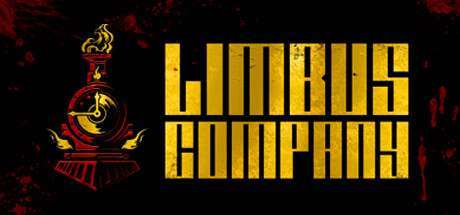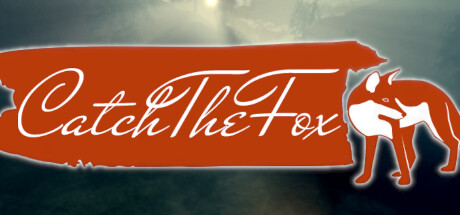Grotto Beasts is an entertaining TCG with a really clever resource system that I haven’t seen used before. It’s good fun. But at the end of this writeup, I’m not going to recommend buying it. I absolutely recommend playing it! Just… not spending money on it. But we’ll get to that.

The most unique part of Grotto Beasts to me is the resource system. It’s very interesting and not particularly complex, but it is very different from anything I’ve seen in a TCG, so I want to go over it in detail first.
Grotto Beasts’ Resource System
Every card card in the game has a cost. To “play” a card, you have to pay its cost, which you do by placing cards facedown into a zone called the summoning pool. The summoning pool cannot be rearranged, and is not a discard pile/graveyard.
Here’s the neat part: whenever an opponent plays a card, you draw cards equal to the cost of that card from your summoning pool. If you didn’t have enough cards in your pool, you continue drawing from your deck..
In addition, except for the first card you play each turn, you cannot play cards if your opponent’s summoning pool is empty.
I found that in the games I played, this led to a bunch of really interesting decisions about what cards to use to pay various costs, and how to order them into the summoning pool. A heavy cost card might be useless now, but placing it at the very bottom makes it hard to get back. Likewise, it gives the game a sort of tempo pace. Dropping a high cost card into your opponent lets them draw a fair number of cards back, and can give them the answers they need to deal with it.
The Rest of the Systems
The rest of Grotto Beasts’ systems are functional and fun, if not as fascinating. Combat is similar to Magic, where all attackers attack at once. Unlike Magic, attack values are summed, and then defense values are summed. Each player chooses how to allocate damage across the enemy line. Cards only have one stat for combat, Power, so it’s fairly easy to keep track of what’s what.
Damage that isn’t blocked goes through, and when it does, the player who did the damage banishes cards off the top of their deck into a score pile, somewhat akin to Pokemon’s prize card system. These cards can’t be looked at, and the first player to get 10 prizes wins. There are also cards that can generate prizes with their effects.
The Good, the Bad, and the Jerma
The Good
For all intents and purposes, this card game was created as Twitch streamer merch. That said, the game itself is strong, generally fun to play, and has interesting and unique systems. I have no real complaints about the mechanical structure of the game, and it’s much better quality then what I would expect for a tie-in product. God we live in a weird world.
Ed Note: As far as I can tell based on the rulebooks, while a wide number of people contributed to this project, only one person is specifically credited with the game’s design: J. Evan Raitt.

One big thing that I really appreciate about the design is that outside of a single six sided die, it doesn’t require any external components or trackers for things like health, counters, or life. It also doesn’t have a complex zone setup system. I mention this mostly because it’s one of my pet peeves with Nostalgix.
The Bad
But while I don’t have complaints about the game’s design structure, I do have two incredibly large bones to pick with some of the specific designs. First, the starter decks. There are two starters decks, and they felt extremely unevenly matched.
One is called Super Luck, and it’s mechanically themed around coin flips and luck. It offers cards that increase the payoffs of winning coin flips, with some ability manipulate those flips. It has a consistent identity and strategy.
The other is called Lot O’ Grottos. It feels much weaker for a variety of reasons. First, the grottos themselves are primarily a defensive tool for the deck, and some provide search and discard pile recursing. But the deck’s stat lines on its creatures are incredibly low. One of the “tricks” the decks has is a 4 drop card that lets you sacrifice creatures at the start of a turn to get a card that costs one more. Except while the deck has two copies of a card that costs 6, it has no card that costs 5, and only two cards that cost 4. That means it’s a card that turns 1 drops into two drops, which aren’t much stronger.
In addition, the Super Luck deck gets a card named Festive Mimic. It’s a 3 cost, 2 power card that has an effect that triggers when it’s played. Its effect is “Roll a die, then draw that many cards.”
Grottos gets a card named Bobbin. It’s 3 cost, 2 power card, that has an effect that triggers when played. Its effect is “Draw a card.”

This isn’t the greatest sin I’ve ever seen committed. I’m more sympathetic to a card game that prints a version of Swords to Plowshares than I am to one that prints the Power Nine (Looking at you, MetaZoo)
However, these are problems with the design of specific cards, not the core mechanics. I haven’t written about this specifically here, but the initial sets of Magic were kind of janky, and the initial sets of the Pokémon TCG led to a dumpster fire meta. A set TCG with some bad initial set design does not make a bad game.
The Jerma
Indie card games are my kryptonite. I will play one demo game of something I’ve never heard of before, and that will be enough to sell me on it. Show me something even mildly exciting, and I will be forking over cash for a booster box.
So why don’t I recommend Grotto Beasts? Ultimately, pricing and production quality.

Grotto Beasts’ boosters are $10 a pop, while the 2P starter set is $80. The starter set contains 2 decks, and 2 boosters, making each deck come out to $30 for 40 cards. For comparison, the Pokémon starter sets retail at aprox $15-20 a deck, with the higher end comp/premium products going for $30.
These prices are high, which is unfortunate and might be tolerable except for one final thing: production quality.
The physical cards are kind of crap. After just three games, the cards themselves were showing scratches and scuffs on the edges. In addition to this, one of the cards I opened in the boosters was straight up missing any sort of finish on the front of the card.
I spent part of this weekend running a pre-release for the new Pokémon set with the same friend I played Grotto Beasts with. And we both agreed that the print quality of Grotto Beasts is much lower quality than current Pokémon cards.
In Conclusion
I absolutely recommend playing Grotto Beasts if you get a chance. While the game has a few mechanical issues, they’re nothing worse than the very first set of any other TCG.
But the sky-high pricing and miserable production quality of the product means I just can’t recommend it, and I don’t plan on buying it, especially with the issue of the starter decks being incredibly unevenly matched.

If you love Jerma, and want to support the project, more out of the sort of tradeoff that we as humans make when we buy content creator merch, you can find the game here.
I, however, am NOT going to go to this website here with a list of all the Grotto Beasts cards and download the images. Then I am NOT going to put them into a big sheet, and I am NOT going to find a way to print them as make my own bootleg set of of the cards to play with.
I am absolutely NOT going to that. Because that would be wrong, and there are no situations where you should just steal a copy of something really expensive or out of print.









